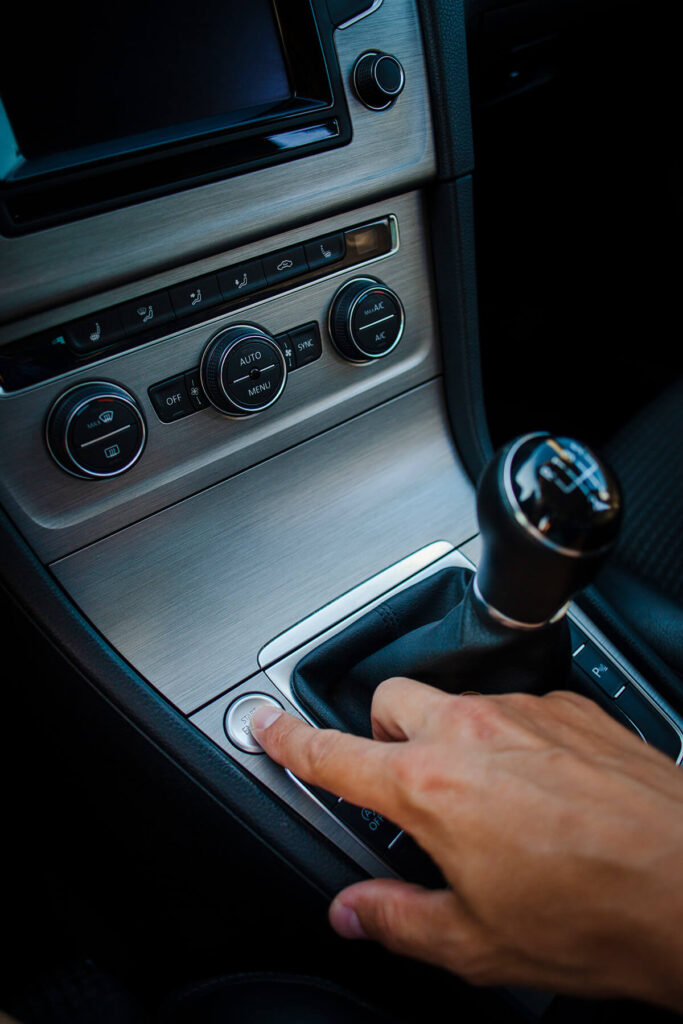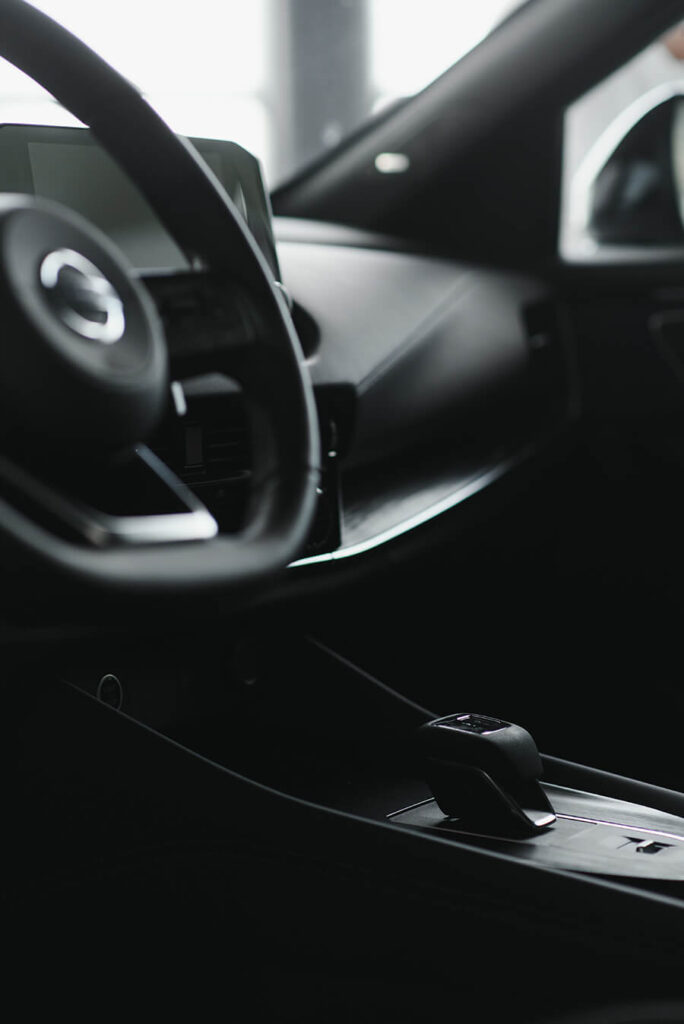How Do Airbags Work?
a guide on airbag deployment
Like the fire extinguisher gathering dust under your sink and the smoke alarms that only remind us they exist when the batteries run low (or we burn dinner), cars come with safety features we barely think about. We hear all about seatbelt safety and using blinkers, but airbags? Not so much. We know they’re there and hope they never have to work. But, when they do, they can save our lives.
So, how do airbags work? This life-saving tech isn’t just a balloon popping out of your dashboard. It’s a complex system that mixes physics, chemistry, and electronics to protect you in a crash. Seat belts help too, but airbags are crucial for car safety, designed to reduce injuries and save lives.
In this blog post, the team at Mizzoni’s Auto Body invites you to dive into the world of airbags— including their history, the science behind them, and the different types you can find. Whether you’re a car enthusiast or just curious, understanding how airbags work can make you appreciate this essential safety feature even more. So buckle up and let’s uncover the mysteries of airbags.
Safety Measures Always Matter
Airbags fall into the category of ‘always want, hopefully never need.’ If you are in a car accident, airbags (and seatbelts!) are your best bet for avoiding major injuries. Sensors around your car alert your airbags to collisions that are strong enough to injure you and potentially damage your car’s frame, letting your airbags know to deploy at the moment of impact. If you’re in a minor fender-bender, your airbags are smart enough to stay in their pouches, as deploying at low speeds where you wouldn’t be injured would just make matters worse.
Airbag Deployment
During collision repairs, our mechanics reset your airbags and ensure the sensors are either functioning or replaced to ensure you’ll have them should you need them again.
The Evolution of Safety
Airbags are safety features designed to inflate quickly during a collision, cushioning passengers and reducing injury risks. They’ve been around longer than you might think!
Airbags have evolved from a novel idea to a crucial safety component in modern cars. John W. Hetrick first patented the airbag in 1951, imagining it as a soft shield during impacts. The concept took off in the late 1960s when Japanese engineer Yasuzaburou Kobori added a chemical explosive for rapid inflation.
A major breakthrough came in 1968 with Allen Breed’s electromechanical airbag system. His design used sensors to detect collisions and deploy airbags in milliseconds, setting the stage for today’s airbag technology.
As technology advanced, the basic airbag system grew to include various types, like front, side, curtain, and knee airbags, offering comprehensive protection from different angles. Nowadays, airbags are a standard feature in vehicles, symbolizing their journey from a simple idea to a sophisticated, life-saving device.
Have You Been in a Car Accident?
Don’t worry, Mizzoni’s Auto Body has your back. We are a locally trusted auto body shop with a lifetime warranty.
A Step-By-Step Breakdown
An airbag system is more than just a bag. It has sensors, an inflation mechanism, and the airbag itself, made from flexible fabric. Sensors are the operation’s brains, detecting sudden deceleration during a crash. Here’s the whole process:
The Collision
It starts with a collision. Your car’s sensors are always on alert for sudden stops, crashes, or impacts. These sensors act like the car’s nervous system, sending instant messages when they sense trouble.
The Signal
When a collision is detected, these sensors send a signal to the airbag’s control unit, which decides if the impact is severe enough to deploy the airbags. This decision happens in milliseconds, faster than you can say “airbag.”
The Chemical Reaction
Once the green light is given, an igniter triggers a chemical reaction inside the inflator. Typically, sodium azide reacts with potassium nitrate, producing nitrogen gas. This rapid gas production inflates the airbag.
The Inflation
The gas fills the airbag, making it burst through the cover on your steering wheel, dashboard, or side panel, fully inflating in about 20 to 30 milliseconds—quicker than you can blink. The airbag creates a soft barrier between you and parts of the car, absorbing and spreading out the force of the impact.
The Deflation
But the airbag’s job isn’t done. After inflating, it immediately starts deflating. This isn’t a flaw; it’s intentional. By deflating quickly, it absorbs the crash’s energy, softening the impact. Plus, it ensures you aren’t trapped against the steering wheel or dashboard by the airbag itself.
A Look at Different Types of Airbags
While front airbags get most of the attention, they aren’t the only protection available in modern passenger vehicles. Today’s cars may have several types of airbags designed to safeguard vehicle occupants from different impact angles.

Front Airbags
Front airbags are the MVPs of air bag systems, protecting front-seat passengers in most front and rear collisions. Since the 1999 model year, the federal government has required all automakers to install driver and passenger-side airbags in all cars, light trucks, and vans. These airbags deploy in moderate-to-severe frontal crashes, preventing the head and chest from hitting hard surfaces.
The main goal of airbags is to reduce driver and passenger fatalities, but they work best with lap and shoulder belts. Newer airbag systems incorporate a safety belt sensor to adjust deployment. For unbelted occupants, frontal airbag deployment occurs at an impact of 10-12 mph, while for belted occupants, the deployment threshold is about 16 mph.
Side Airbags
Side airbags deploy from the sides of the seat or door, offering head and chest protection in side-impact crashes. Since side crashes can expose vehicle occupants to striking vehicles or shattered window glass, side airbags must deploy within the first 10-20 milliseconds of impact.
Thresholds for side airbag deployment vary depending on the impact type. A crash involving narrow objects like poles or trees can trigger deployment at around 8 mph, while wider impacts, such as vehicle-to-vehicle crashes, may activate airbags at 18 mph. Some air bag systems also deploy side airbags in certain frontal crashes.
Since 2014, federal regulations have required a certain level of head and torso protection for all occupants, leading to the standard inclusion of side airbags in most passenger vehicles.
Side Curtain Airbags
Side curtain airbags drop down from above the windows, shielding the head from the side of the car and flying debris. Some models include sensors that detect if a rollover is about to happen, triggering deployment. These airbags inflate within 10-20 milliseconds and cover the window opening to prevent ejection.


Knee Airbags
Some manufacturers include supplemental knee airbags, mounted lower in the dashboard, to reduce leg injuries. These airbags also help control lower body movement to protect the chest and abdomen. In 2025, ZF Lifetec introduced a heel airbag designed to work alongside knee airbags. Installed under the carpet, this airbag deploys around the accelerator and brake pedals.
Seat Belt Airbags
Seat belt airbags are a newer addition, designed to spread the force of a seatbelt over a larger area to reduce pressure on the chest. Ford introduced these in 2011 to reduce rear-seat injuries. These airbags enhance protection for both adults and children using booster seats or seat belts alone. Currently, they are optional for second-row outboard seats in several Ford and Lincoln models. The Mercedes-Benz S-Class includes standard inflatable belts.
Far-Side Airbags
Also called front-center airbags, these airbags prevent front-seat passengers from colliding with each other in side-impact crashes. General Motors first introduced this airbag system in 2013. Toyota has developed a similar version aimed at rear seat passenger protection, deploying from the center console. These airbags are available in vehicles like the Chevrolet Traverse, GMC Acadia, Buick Enclave, and Genesis G80 and GV80.
Panoramic Sunroof Airbags
In 2017, Hyundai Mobis, a member of Hyundai Motor Group, introduced the first panoramic roof curtain airbag. Designed to prevent occupant ejection through the sunroof during rollovers, these airbags faced design challenges, as they needed to deploy properly with the sunroof open or closed while remaining compact in the headliner without affecting headroom or visibility.

Airbag system issues?
For the Science Enthusiasts
When a car suddenly stops in a crash, passengers keep moving forward due to inertia. Airbags help slow down passengers more gradually, reducing the force on their bodies. Sensors measure the crash’s speed and force to trigger airbags if deceleration exceeds a preset threshold.
Airbag Inflation
Upon activation, an igniter starts a chemical reaction, often involving sodium azide (NaN3). The heat causes sodium azide to decompose explosively into nitrogen gas, shown in the equation 2NaN3 → 2Na + 3N2. Just 130 grams of sodium azide can produce 67 liters of nitrogen gas, enough to inflate a standard airbag.
Dangers of Sodium Metal
But what about the sodium? Sodium is a reactive metal that can quickly react with water—not something you want near your eyes, nose, or mouth during a crash. That’s why airbags also have chemicals that react with sodium to reduce toxicity.
Airbags Save Lives
The main goal of the airbag isn’t just to provide a soft cushion but to extend the time over which the head and upper body decelerate, spreading the forces over a larger area of the body. This helps prevent severe injuries typical in high-speed impacts.
Airbag Injuries Leading to Further Improvements
Although airbags reduce driver fatalities, quickly inflating airbags can occasionally cause injuries. Early frontal airbag systems deployed with significant force, sometimes causing injuries in low-speed crashes. This issue particularly affected children and infants in rear-facing child safety seats, as they were positioned too close to the deploying airbag.
To reduce airbag injuries, the federal government introduced new regulations in two phases. First, automakers were required to reduce frontal airbag energy starting with 1998 models. Later, the National Highway Traffic Safety Administration (NHTSA) introduced a certified-advanced airbag rule, requiring more sophisticated air bag systems in all passenger vehicles by the 2007 model year.
Advanced airbags modify deployment based on weight sensors that detect a small driver, front seat passenger, or child safety seat. Automakers must now pass rigorous crash tests using different-size dummies, both belted and unbelted, at various speeds and configurations.
Faulty airbags can also lead to injuries, often due to failure to deploy, incorrect deployment timing, or defective components. While safety improvements have made airbags safer and require minimal maintenance, they should still be regularly checked to protect all vehicle occupants.
How to Prevent Injuries from Airbags
- Drivers and front-seat passengers should sit upright in the center of the seat with both their feet on the floor.
- Never rest your arms and legs against an airbag.
- Avoid aftermarket dash or seat covers, as they can block or redirect an air bag deployment.
- Drivers should sit with their chests at least 10 inches away from the center of the steering wheel.
- Young children should sit in the rear seat. If a child needs to ride in the front passenger seat, they should be securely buckled and the seat should be as far back as possible.
- Children shouldn’t lean against the door area where the side airbag is stored.
- For women in the late stages of pregnancy, a combination of properly positioned safety belts and airbags offers the best protection. Like other drivers, pregnant drivers should ensure their abdomens are at least 10 inches from the steering wheel. The lap belt should be positioned high on the thighs (ideally on pelvic bones), below the soft part of the abdomen.
Before and After a Wreck
With airbags, a little maintenance goes a long way. Always watch for your airbag indicator light on the dashboard. If it’s lit, something might be up with your airbag system, and it’s time for a visit to Mizzoni’s Auto Body.
While airbags are great at preventing serious injury they work best with seatbelts. So buckle up! It’s the ultimate safety duo.
If you’re in a wreck, your car may need some specialist TLC. You want a mechanic you know you can trust, who will work closely with your insurance to ensure you get the most coverage from your policy for any repairs, including any auto glass that was cracked or busted on impact.
The End of the Road
There you have it, the mystery of airbags revealed. From smart sensors detecting crashes to rapid chemical reactions inflating lifesavers in milliseconds, it’s a marvel of modern engineering and a crucial part of vehicle safety. While we at Mizzoni’s Auto Body love the science and mechanics behind these devices, what truly excites us is their role in protecting lives.
So, the next time you’re out driving, remember the silent guardians tucked neatly inside your car, ready to spring into action.
